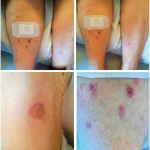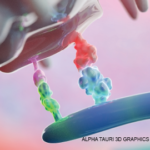 BALTIMORE—Every patient tells a story. As clinicians, we learn from each patient and use this hard-won wisdom to improve clinical management. At the 18th Annual Advances in the Diagnosis & Treatment of the Rheumatic Diseases symposium, held May 13–14 at Johns Hopkins School of Medicine, Baltimore, Uzma Haque, MD, associate professor of clinical medicine and co-director of clinical operations in the Arthritis Center, Johns Hopkins School of Medicine, used patient cases to discuss the management of difficult-to-treat rheumatoid arthritis (RA) and the management of RA in the context of important comorbidities.
BALTIMORE—Every patient tells a story. As clinicians, we learn from each patient and use this hard-won wisdom to improve clinical management. At the 18th Annual Advances in the Diagnosis & Treatment of the Rheumatic Diseases symposium, held May 13–14 at Johns Hopkins School of Medicine, Baltimore, Uzma Haque, MD, associate professor of clinical medicine and co-director of clinical operations in the Arthritis Center, Johns Hopkins School of Medicine, used patient cases to discuss the management of difficult-to-treat rheumatoid arthritis (RA) and the management of RA in the context of important comorbidities.
Difficult-to-Treat RA
Dr. Haque explained that difficult-to-treat RA can entail many elements, such as severe disease, poor prognostic factors, multiple drug toxicities, extra-articular disease and significant comorbid conditions. Other elements that may complicate care include adherence and compliance with the medical plan, poor access to healthcare and medications, low health literacy and misalignment of patient and clinical goals.
The European Alliance of Associations for Rheumatology (EULAR) has developed a specific definition for difficult-to-treat RA, which includes three features:
- Treatment failure of two or more conventional synthetic disease-modifying anti-rheumatic drugs (DMARDs), unless they are contraindicated; and treatment failure of two or more biologic or targeted synthetic DMARDs with different mechanisms of action;
- Signs suggestive of active disease progression; and
- The management of the signs and symptoms of RA being perceived as problematic by the rheumatologist and/or patient.
Signs of active disease progression may include moderate disease activity on such measures as the Clinical Disease Activity Index (CDAI) or Disease Activity Score-28 for Rheumatoid Arthritis with erythrocyte sedimentation rate (ESR) (DAS28-ESR); inability to taper glucocorticoids to less than 7.5 mg daily of prednisone; rapid radiographic progression of disease, with or without active signs of RA; or well-controlled disease but ongoing RA symptoms causing reduced health related quality of life.1
In cases of difficult-to-treat RA, Dr. Haque noted it sometimes helps to employ ultrasound or magnetic resonance imaging (MRI) to detect active subclinical disease. It’s also essential to evaluate for non-inflammatory syndromes, such as concurrent fibromyalgia, symptoms related to concomitant osteoarthritis, how psychosocial factors are affecting patient symptoms and the patient’s coping skills.
If a patient is not doing well, several items should be revisited by the rheumatologist:
- Is the underlying RA diagnosis correct? This question may be especially pertinent for patients with seronegative disease; and
- Was the length of time on a prior therapy sufficient to see a treatment effect? If a patient has had a side effect with a medication, it may be worth exploring if there is a way to mitigate that side effect to determine if the medication can ultimately be tolerated and help the patient.
In patients for whom all treatments have truly proved inadequate, rheumatologists can consider older treatments, such as azathioprine with methotrexate, cyclosporine with methotrexate, anti-IL-1 antibody therapy, mycophenolate mofetil or tacrolimus. It may also help to ask patients—in a nonjudgmental manner—if they are skipping or missing doses of their medications or having trouble affording medications or receiving refills in a timely manner.



